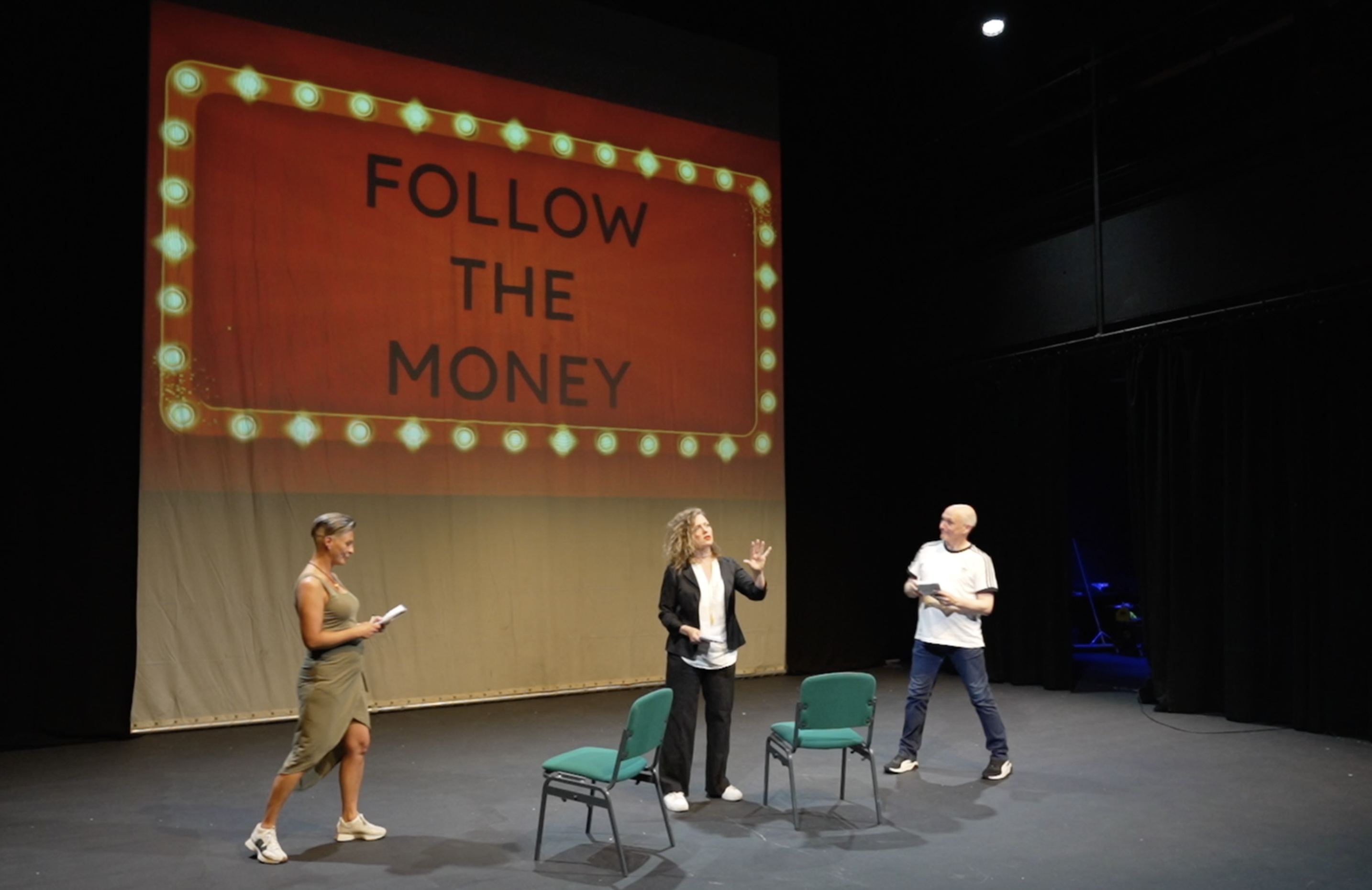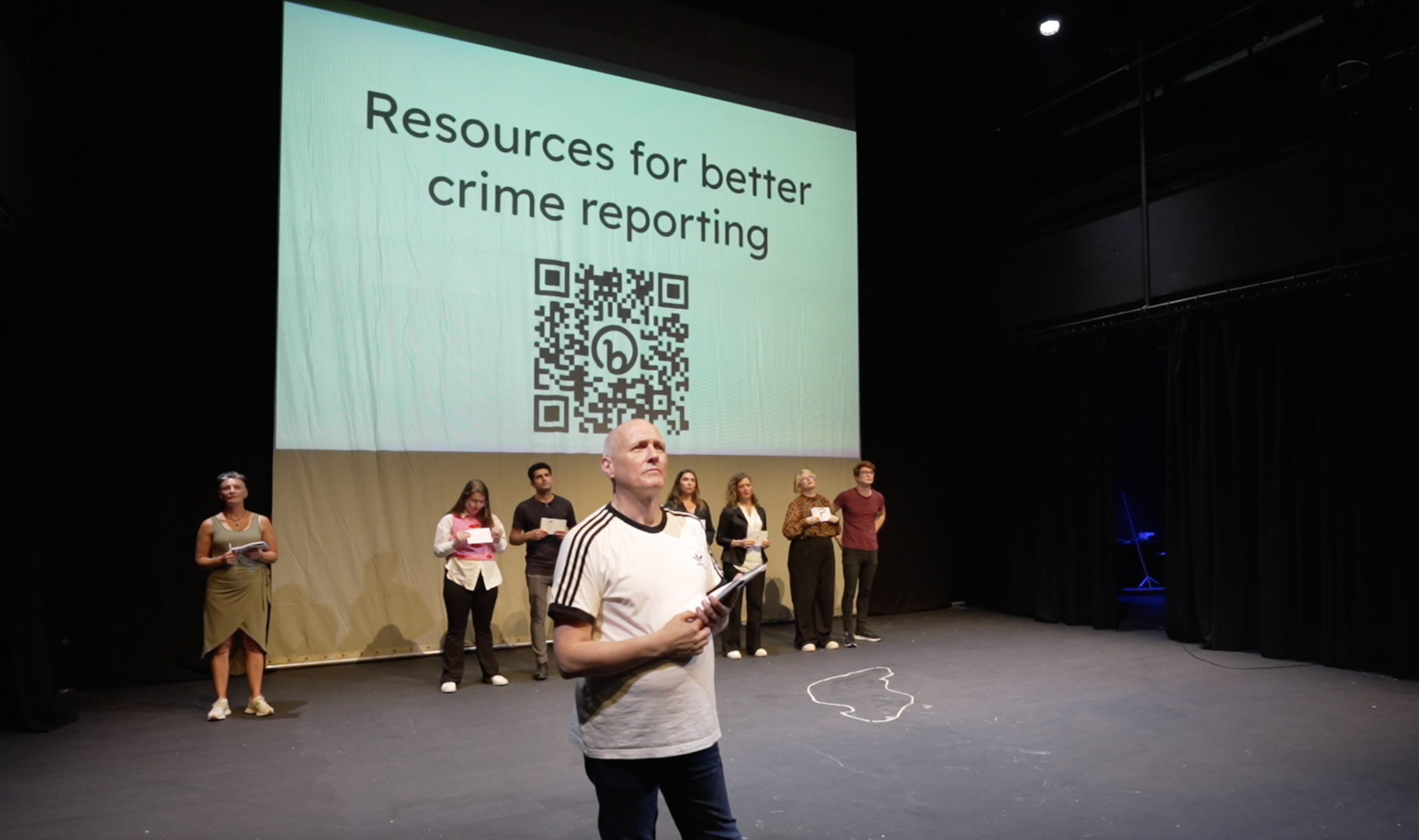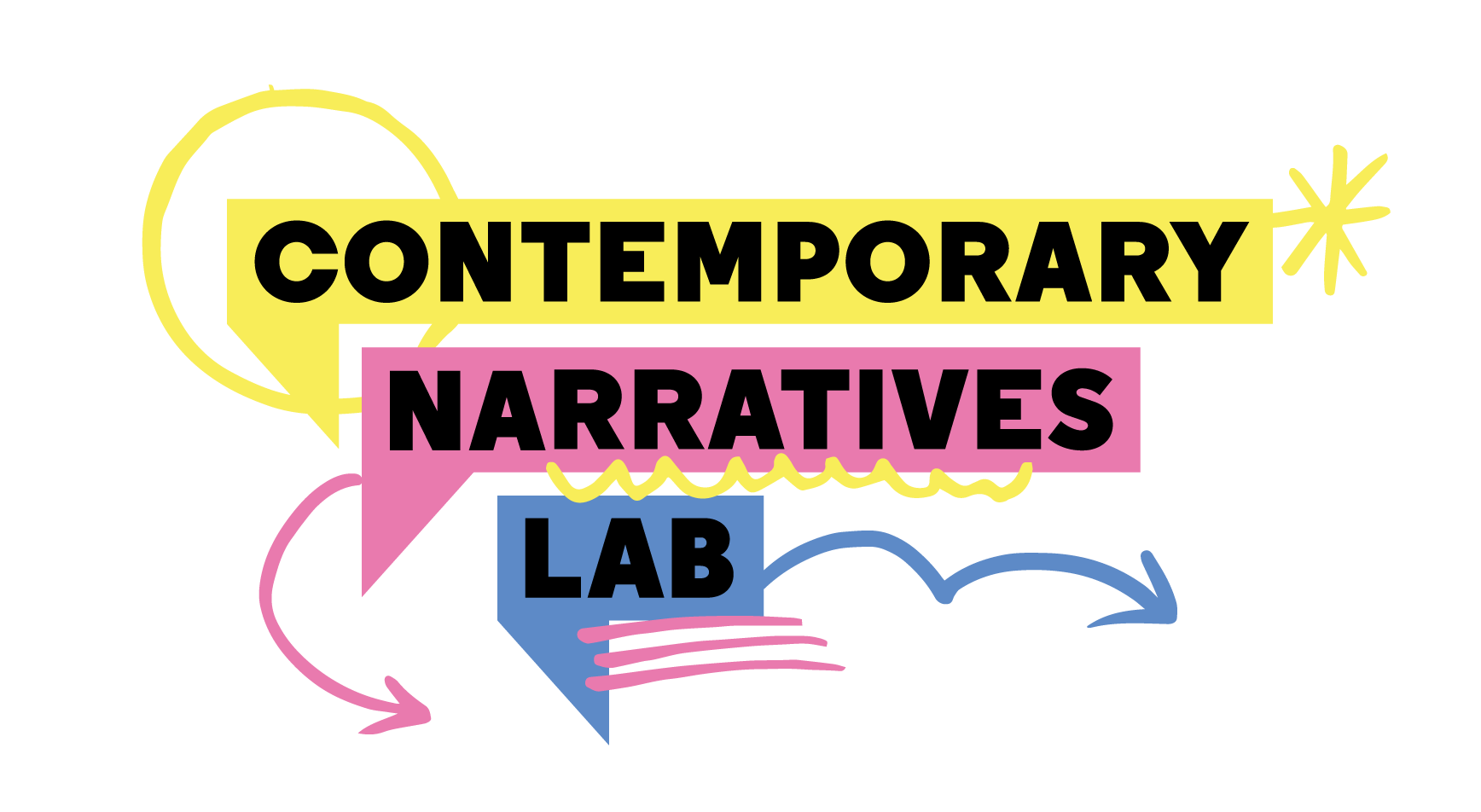
Photo/Video: Ruari Barber-Fleming
“Thug”
“Serial Offender”
“Victim”
As words normally associated with crime reporting flashed up on screen, eight performers strode onto the stage at the Tron theatre in Glasgow to kick off It’s Criminal, a live journalism project exploring the impact traditional crime reporting is having on Govanhill, an Glaswegian neighbourhood whose citizens are often scapegoated or blamed for crime.
The hour-long performance depicted a day in the life of a newsroom, and featured vignettes that showed how stories can become sensationalized during the editorial process, as well as the pressures facing local journalists. In one scene, a nuanced interview with an Iraqi journalist refugee who recently relocated to Govanhill is summarised by a senior editor as: “Refugee says Govanhill Crime Wave Worse than Iraq”.
In another, a news meeting is turned into a gameshow where reporters compete to get their story onto the front page. The losing reporter is told to “retrain to get a job in cyber, or something”.

Photo/Video: Ruari Barber-Fleming
None of the performers are professional actors. Instead, they are journalists, researchers and citizens of Glasgow. Everyone has been involved in or been affected by crime reporting in some way. It’s Criminal draws inspiration from the historic Living Newspaper theatre model in the US, which brought journalism to life on stage by groups centred around particular issues. It is an experiment exploring how journalism and journalists can better build trust through listening deeply to communities’ concerns, in a way that draws from restorative justice practices. (Read more about the thinking behind the project here).
Devising the Show
The performance at the Tron is the culmination of a months-long participatory research project led by investigative journalist Rachel Hamada and Dr Glenda Cooper. The Ferret and Greater Govanhill magazine, partners in this project, helped organize a community newsroom event to explain the project and recruit local participants, who were paid for their time.
“Our motivation with It’s Criminal is to question the extent to which current journalism serves the public, especially people from marginalised groups or with existing experience of the criminal justice system,” said Dr Cooper. “We want our audiences to be able to critique journalism as equals, and to understand how journalism is not objective but a matter of perspective. Finally with It’s Criminal, we aim to use theatre to show how different ways of reporting can be transformative and positively change lives and neighbourhoods.”

Photo: Angela Catlin
Across three workshops, participants discussed media portrayal of crime and reviewed news articles about crime in Govanhill. Journalist participants explained the journalistic process to the group, and the group was introduced to the concepts behind the Theatre of the Oppressed. Director Liam Rees devised the show alongside the participants, who also worked with an illustrator to come up with artwork for the show.
“I think the discussions [in the workshops] were really valuable and they were a very important part [of the project],” one participant said. “The show at the end was just one part of it—the public facing thing. But I think the kind of discussions and the exercise we did on creating It’s Criminal and brainstorming stuff is what we all learned a lot from.”

Photo: Angela Catlin
Throughout this process, extra care was taken to ensure that participants were equal co-creators, felt safe in the workshop environment, and that the process would not re-traumatize them. There were clear guidelines on participation, no recording of the workshops, and nothing that was said during the workshops were used in the final performance without the participants’ explicit permission.
The research that was done for the workshop also included compiling a list of resources on the landscape of crime reporting.
Feedback and reception
A key part of the show came at the end, when the performers opened the floor to a discussion between the cast and the audience.
A lively discussion was had around questions such as: “What do you think could be done to improve on how we report on crime?” and “What would do the most to make you trust the media at the moment?” One audience member pointed out that “without long-term relationships [between journalists and the community they cover], areas get known by their worst, by an individual crime or an individual incident.” Others pointed out issues with off-shore media ownership, or how journalists and news organizations can do a better job in being upfront and honest about their biases: “I think it’s impossible that someone could remove themselves completely from their biases and experiences and context.”

Photo/Video: Ruari Barber-Fleming
Both audience members and project participants thought that combining live journalism performance with audience discussion was effective.
“I think that the element that most surprised me was there a very strong reaction from the audience,” said one of the project participants afterwards. “Yeah. Like, it’s difficult to establish a connection with an audience and make them speak, because usually in a theatre, you are passive as the audience. But they were very prone to talk – it was like they were waiting for the chance to talk about these kinds of issues, like ‘Yes! Someone is finally asking me my opinion about it!’ And that’s very remarkable if you consider that there was a very short time to work at the play.”
One audience member said after the show that “showing how newsrooms operate is a really effective way of letting audiences see how stories become sensationalised.” Another said “the show made me think about those whose stories are sensationalised and how they are negatively affected. It will make me think deeper about what’s behind the headlines.”
Next steps
The show was profiled in the Greater Govanhill magazine, and will be presented as part of panel discussions at the 2023 International Live Journalism Festival in Toronto. We have ambitions to bring the show to other cities in the UK, and to use the show as a starting point for changing the way crime reporting is practiced in the UK and beyond.
“We see this as the beginning of an exploration of how crime reporting affects communities. This is a conversation that urgently needs to be had, and we plan to take the It’s Criminal process to different cities and communities. Do get in touch with us if this is something you are interested in getting involved in,” said Dr Cooper.
It’s Criminal is a collaboration between Contemporary Narratives Lab, The Ferret and Greater Govanhill magazine, supported by City University of London’s Higher Education Innovation Funding Knowledge Exchange.

Illustration: Chris Lau Manson
